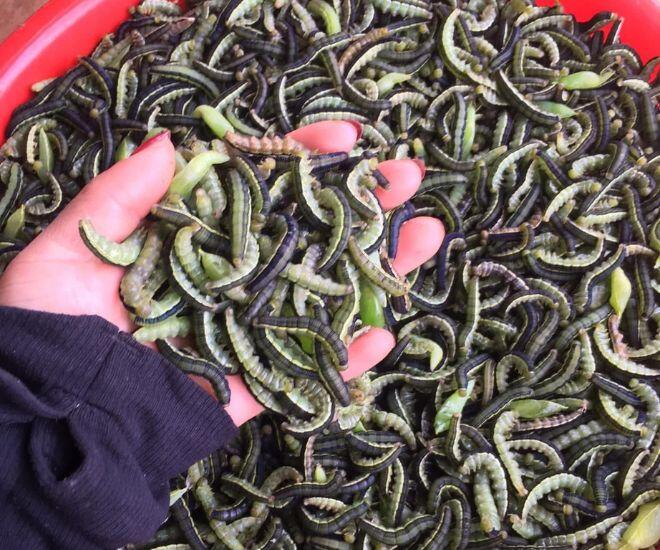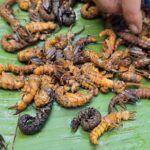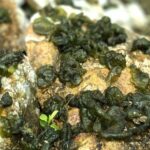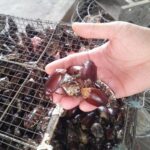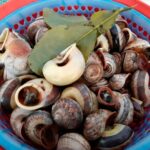## The Unique Delicacy of Tay Nguyen: A Cultural Culinary Treasure
For those unfamiliar with the region, the mention of nhộng sâu muồng may elicit hesitation, but for the local Ede community, it is a delicious delicacy, a source of pride, and a distinct culinary tradition.
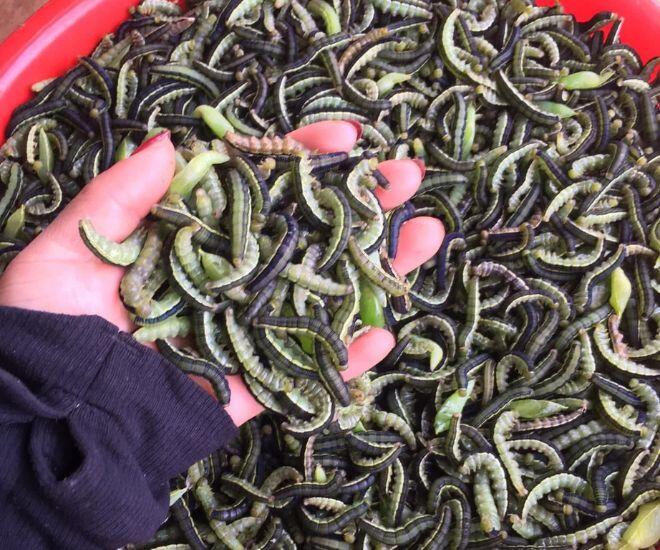
The muong tree, commonly grown for shade and as a support for pepper vines in coffee plantations, is home to these special caterpillars. In the scorching heat of late March and early April, thousands of golden butterflies migrate from the muong forests, laying their eggs. Within days, tiny green caterpillars with black stripes and glossy bodies emerge, clinging to the muong and pepper leaves.
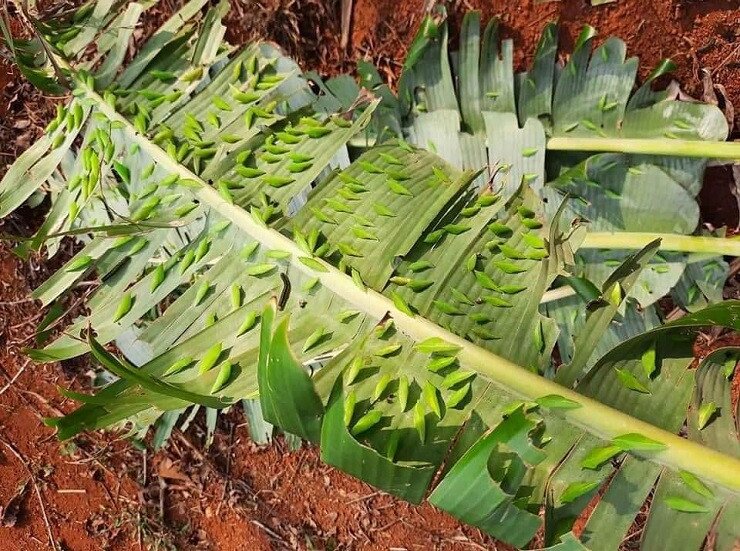
These voracious caterpillars, with their distinctive yellow backs, soon plump up on the tender muong leaves. After this feast, they are ready for a remarkable transformation. Overnight, they spin cocoons and emerge as jade-green pupae, quietly resting beneath the foliage.
At this stage, the pupae are at their culinary prime, resembling tiny grains of young rice, slightly smaller than the tip of a finger. They are now ready to be harvested and turned into delectable dishes.
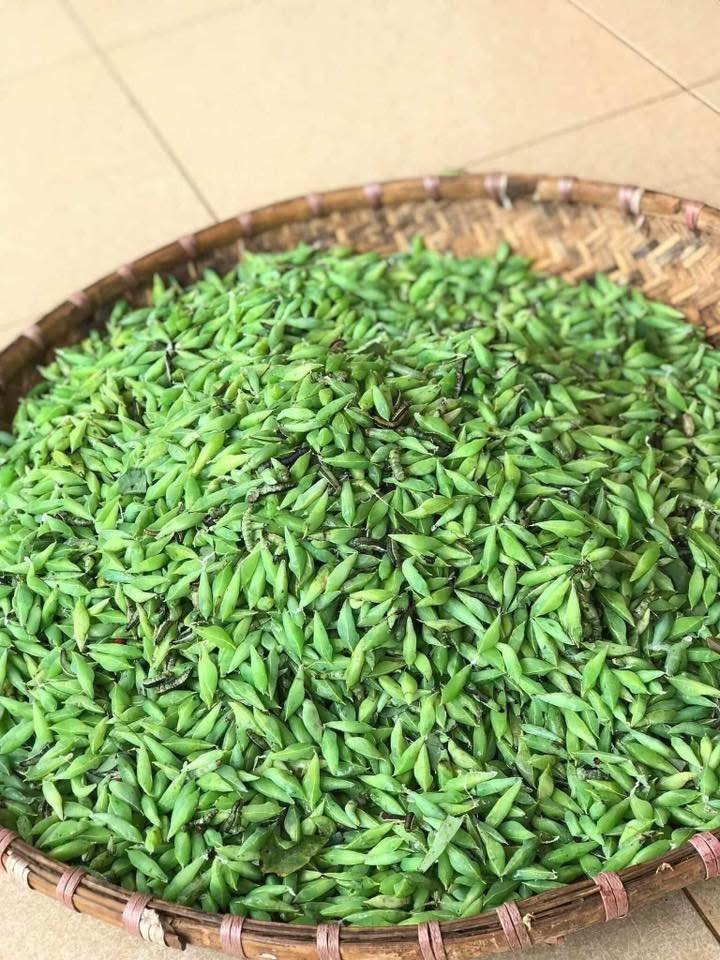
Preparing nhộng sâu muồng is deceptively simple, preserving the natural flavors. Captured caterpillars are fed additional muong leaves for half a day to ensure they are free of any impurities. Then, they are thoroughly washed and left to dry.
In a hot pan, a fragrant mix of fried garlic and shallots is prepared. The pupae are then gently tossed in the pan, seasoned with salt, sugar, and fish sauce to taste. Some recipes also include chopped chili and kaffir lime leaves for an added kick. However, the traditional Ede method involves cooking them plain, allowing the natural sweetness and richness of the pupae to shine through.
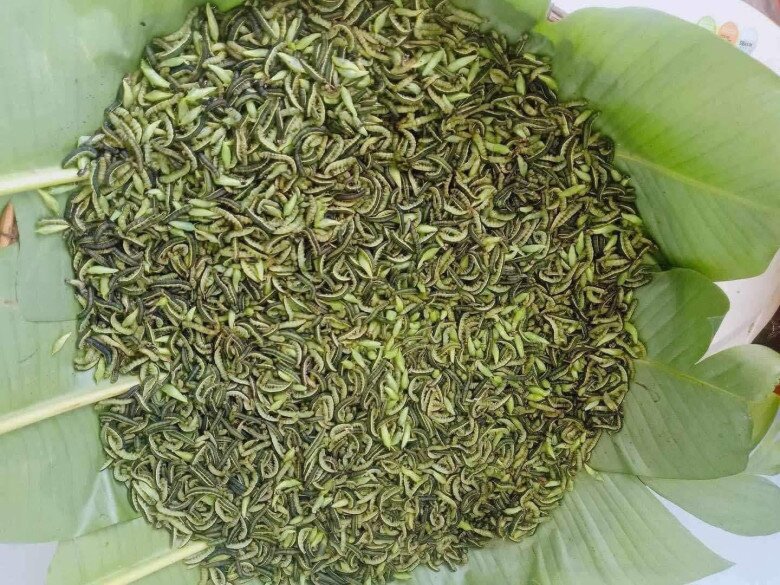
As the nhộng sâu muồng cooks, it transforms into a golden delicacy. Biting into it reveals a crispy exterior and a melt-in-your-mouth texture, with a distinctive buttery flavor and a hint of nuttiness. The subtle aroma of muong leaves lingers on the palate, a testament to the unique taste of this dish. Unlike silkworm pupae, nhộng muồng is remarkably non-greasy, inviting diners to indulge in bite after bite.
Beyond its delicious taste, nhộng sâu muồng holds traditional medicinal value passed down through generations of the Ede community. It is believed to be a remedy for malaria and a tonic for kidney health and virility, making it a beloved snack during hot and lazy days.
Nhộng sâu muồng has evolved from a humble Ede delicacy to a renowned specialty of Tay Nguyen, attracting tourists eager to sample its unique flavors and experience its nutritional and medicinal benefits. Known as “forest shrimp,” it has become an integral part of the region’s culinary heritage, celebrated for its distinctiveness and generosity of nature’s bounty.
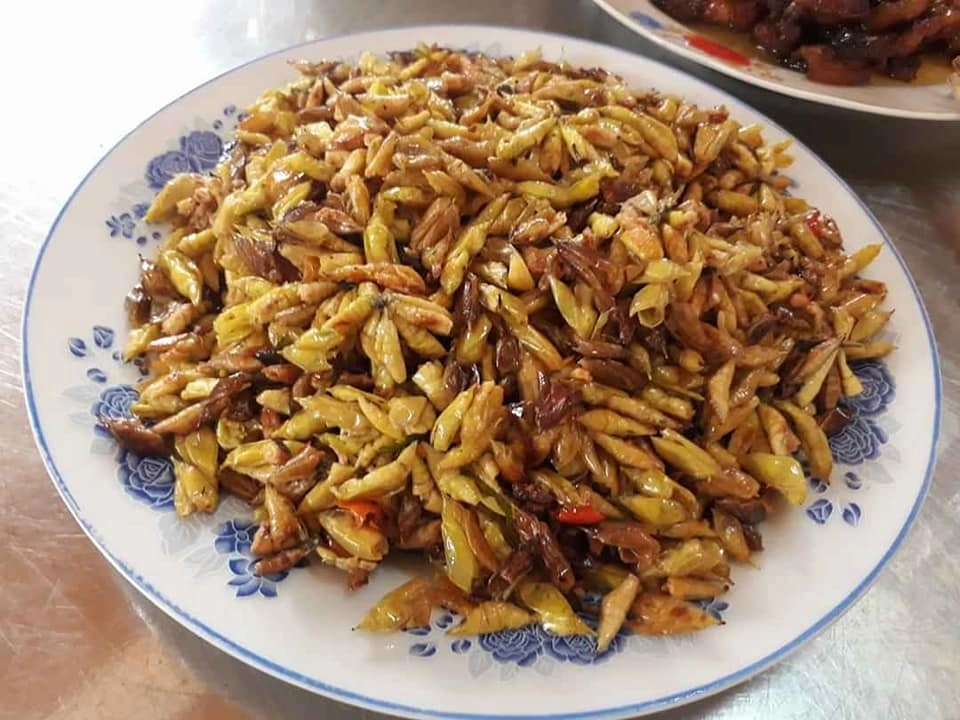
The season for nhộng sâu muồng is fleeting, lasting only through March and April. With the arrival of the rainy season, the pupae metamorphose into butterflies, flying off to new destinations. Though the season passes, the memory of its sweet, buttery, and nutty flavors lingers, a reminder of the wild and generous spirit of Tay Nguyen’s cuisine.
Wild Gotu Kola: Unassuming Weed with Amazing Benefits, Now a Modern Delicacy, Sighted and Sought After.
“Purslane, a humble yet powerful vegetable, is a steal when spotted at the market. This underrated green is a nutritional powerhouse, offering an array of health benefits that will leave you wondering why you haven’t been snapping it up all this time. A true superfood, purslane is an affordable and accessible way to boost your health and elevate your culinary creations.”
A Heavenly Delicacy: The Unique, Rainy-Season Treat That’s Taking the Culinary World by Storm
The Black Lady Mountain in Tay Ninh province is home to a unique delicacy – the mountain snails. These snails have a distinct palate, feasting on a variety of herbal delights that grow wild on the mountain slopes. Their menu includes the likes of herbal plants such as ma tien, la vong nui, and la Nang Hai.


























